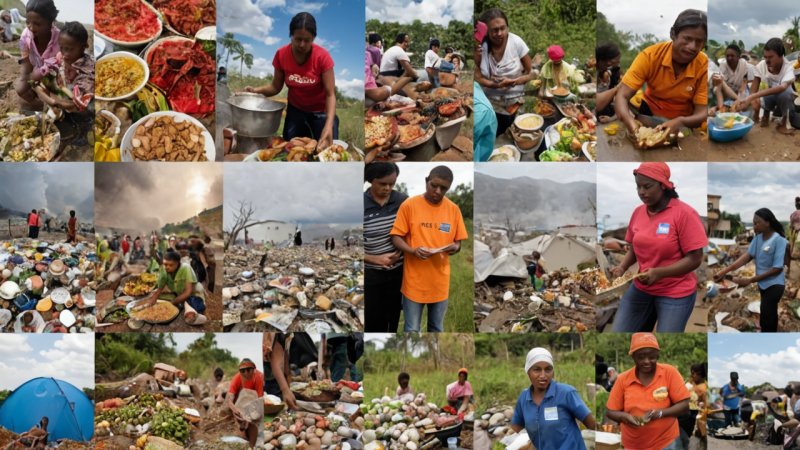Climate change is not merely a distant threat; it is a pressing reality that is reshaping the landscape of humanitarian aid and community service across the globe. As environmental conditions deteriorate, the challenges faced by vulnerable populations increase exponentially. Humanitarian organizations are grappling with the dual task of delivering immediate relief while also adapting to the changing climate, which is often a major driver of crises. This article delves deep into how climate change is affecting humanitarian efforts, examining its implications on health, education, poverty alleviation, disaster relief, and environmental protection.
Understanding Climate Change and Its Humanitarian Implications
Climate change refers to long-term alterations in temperature, precipitation, wind patterns, and other elements of the Earth's climate system. The Intergovernmental Panel on Climate Change (IPCC) has reported significant increases in global temperatures, linked to human activities such as fossil fuel combustion, deforestation, and industrial processes. These changes are not only environmental; they have profound implications for human health, security, and social stability.
Health and Wellbeing
The health implications of climate change are multifaceted. Increased temperatures contribute to a rise in heat-related illnesses and can exacerbate existing health conditions. Vulnerable populations, such as the elderly and those with pre-existing health issues, are particularly at risk.
- Vector-borne Diseases: Warmer temperatures expand the habitats of disease-carrying insects, leading to the spread of diseases like malaria, dengue fever, and Zika virus. This places additional strain on health systems already stretched thin by ongoing humanitarian crises.
- Nutritional Challenges: Climate change adversely affects food security by disrupting agricultural production. Droughts, floods, and erratic weather patterns result in crop failures and reduce access to nutritious food, leading to malnutrition and related health issues.
- Mental Health: The psychological impact of climate change, including anxiety and depression due to displacement or loss of livelihood, can further complicate humanitarian efforts.
Education and Literacy
Education is a critical component of humanitarian aid, yet climate change poses significant barriers to learning. Educational institutions are often damaged or destroyed by extreme weather events, leading to disruptions in schooling.
- Access to Education: Displacement due to climate-related disasters can force children to relocate, often to areas where educational opportunities are limited. This hinders literacy and overall educational attainment.
- Curriculum Adaptation: There is a growing need for educational curricula to include climate change education to prepare future generations. However, this requires resources and trained educators, which may be lacking in crisis-affected regions.
Poverty Alleviation
Poverty is both a cause and a consequence of climate change. Vulnerable communities often lack the resources to adapt to changing conditions, trapping them in a cycle of poverty.
- Livelihood Disruption: Climate change adversely impacts agriculture, fisheries, and other livelihoods, forcing families into poverty and increasing dependence on humanitarian assistance.
- Economic Inequality: Disparities in wealth and resources mean that poorer countries and communities are disproportionately affected by climate change, making it harder for them to recover from shocks.
Disaster Relief
Disaster relief efforts are increasingly challenged by the frequency and intensity of climate-related disasters. The need for rapid response mechanisms is more critical than ever.
- Preparedness Planning: Humanitarian organizations must invest in preparedness planning to mitigate the impact of disasters. This includes early warning systems and community training.
- Resource Allocation: Resources for disaster relief are often limited, and climate change exacerbates competition for these resources, making it crucial for organizations to prioritize effectively.
Environmental Protection
Humanitarian efforts must align with environmental protection to ensure sustainable recovery and resilience. This includes promoting practices that do not harm the environment.
- Sustainable Practices: Humanitarian organizations are increasingly adopting sustainable practices in their operations, such as using renewable energy sources and minimizing waste.
- Community Engagement: Engaging communities in environmental protection initiatives can foster resilience and empower individuals to take charge of their recovery efforts.
Case Studies of Humanitarian Initiatives Addressing Climate Change
Several humanitarian organizations are already implementing innovative solutions to address the impacts of climate change:
- World Food Programme (WFP): The WFP is developing climate-resilient agricultural practices that help communities adapt to changing weather patterns while ensuring food security.
- International Federation of Red Cross and Red Crescent Societies (IFRC): The IFRC has launched programs focused on disaster risk reduction, providing training for communities to prepare for climate-related emergencies.
- Oxfam: Oxfam is working to integrate climate change adaptation into its poverty alleviation strategies, ensuring that vulnerable communities can build resilience against environmental shocks.
How Individuals Can Get Involved
While large organizations play a crucial role in humanitarian efforts, individual actions can also make a significant impact. Here are some ways to get involved:
- Educate Yourself: Understanding the effects of climate change and humanitarian issues is the first step toward making a difference.
- Volunteer Your Time: Many organizations look for volunteers to help with various initiatives. Consider offering your skills or time to support local or global humanitarian efforts.
- Advocate for Change: Use your voice to raise awareness about the impacts of climate change on humanitarian efforts. Engage with local leaders and policymakers to push for solutions.
- Support Sustainable Practices: Make conscious choices in your daily life that prioritize sustainability, such as reducing waste, conserving energy, and supporting eco-friendly products.
Conclusion
The intersection of climate change and humanitarian aid presents a complex challenge that requires urgent attention. As the impacts of climate change intensify, humanitarian organizations must adapt their approaches to address not only immediate needs but also the long-term resilience of vulnerable communities. By understanding the implications of climate change on health, education, poverty, disaster relief, and environmental protection, we can begin to forge a path toward a more sustainable future. Every individual has a role to play in this endeavor—whether through education, advocacy, or direct action. Together, we can support humanitarian efforts that not only respond to crises but also build a more resilient world for generations to come.






